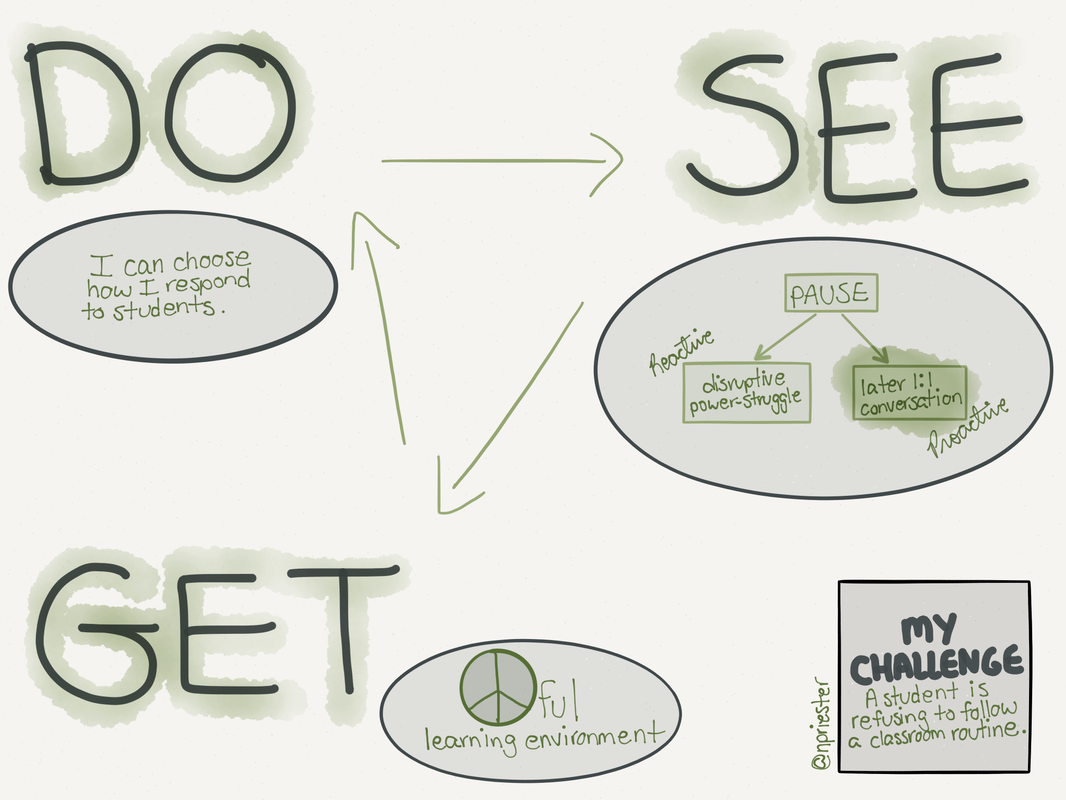|
Habit
As a result of the abuse and additional traumas the students of San Pasqual Academy have experienced, reactive, negative, and victimized behaviors and attitudes are often exhibited on our residential campus. Some weeks, it feels like we--adults included--become stuck in a cycle reactive behaviors. It is emotionally exhausting. As I listened to Dr. Pumpian explain Habit 1: Be Proactive from 7 Habits of Highly Effective People by Stephen Covey, I began to think of how developing a habit of being proactive could benefit my students. But, as I began to consider how to apply this habit in my own life, I soon realized that it may be more beneficial for the adults on our campus to implement the habit. By doing so, we can help break the cycle of reactive behavior. In addition to helping to build a more peaceful culture, adults can instead model proactive behavior and stop rewarding/feeding into reactive behavior. My Habit As practice, I focused my habit implementation on a recurring frustrating circumstance that occurs in my classroom. I start my class with a meeting that takes place in a corner of the classroom in a circle of small chairs. Even though my students and I frequently discuss the meaning behind the circle, a few students occasionally choose to remain at desks instead of sitting with the group. This drives me nuts! I often struggle to just “let it go” and start the meeting without them. Instead, I waste the class's time by addressing these students--even though I logically know it normally just sparks more negative behaviors. So, I decided to focus my habit on this classroom routine to help myself avoid frustrating emotions and to help guide myself to appropriately address the situation. Since I am learning to use Paper 53, I created my plan using as a sketchnote based on the See Do Get Paradigm explained by Dr. Pumpian:
Before school starts next week, I plan to review this plan a few times and may even set it as the background on my iPad. By not responding to students who are not sitting with the group, I will be able to remain focused on creating a positive learning environment. Also, I will make it a point to hold private one-one-one conversations with the students who are not attending to discuss the reasons behind their reluctancy and create a plan to help them join the group. I hope that practicing my new habit will eventually lead to full class meeting participation.
My plan worked fine until we began to brainstorm situations in which he could practice the habit. He struggled to understand the need for any new habits in his life and became defensive. Toward the end of the hike, he finally said he could apply it to his response when he checks his bank account balance on his phone. He was able to connect his frustration to situations from his past, but again became agitated when I attempted to help him see the situation from a more optimistic perspective. So, I decided to be proactive myself and “let it go” for the night. At this point, I am unsure if I will keep Damon as my student for this project.
1 Comment
Lili Greenlaw
9/8/2015 04:08:03 pm
A residential campus is interesting because (to my knowledge) the students live and learn side-by-side with each other 24 hours; 7-days a week. Is this similar to San Pasqual Academy?
Reply
Leave a Reply. |
Habits Module@npriesterA collection of my learning from the Habits Module of EDL 610 Educational Leadership in PreK-12 Educational Organizations ArchivesCategories |

 RSS Feed
RSS Feed